Spin finish content determination
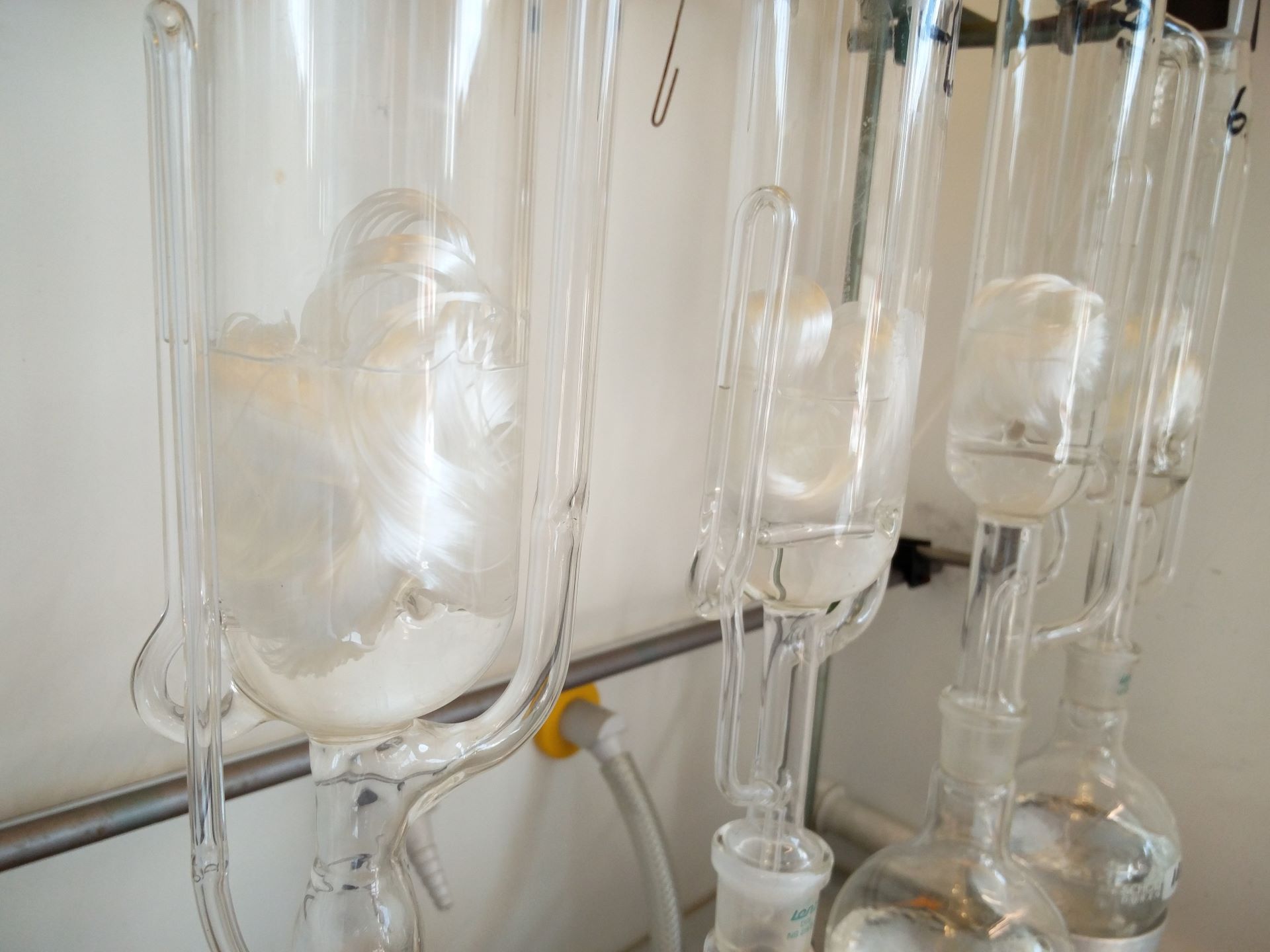
Spin finish content determination explained The spin finish content on yarns can be determined through extraction. A soxhlet extraction apparatus is used to do so. A predefined amount of yarn is taken and loaded into an extraction liquid. When the extraction is completed, the extraction liquid is evaporated and a spin finish residue remains ready […]
NMR (Nuclear Magnetic Resonance)
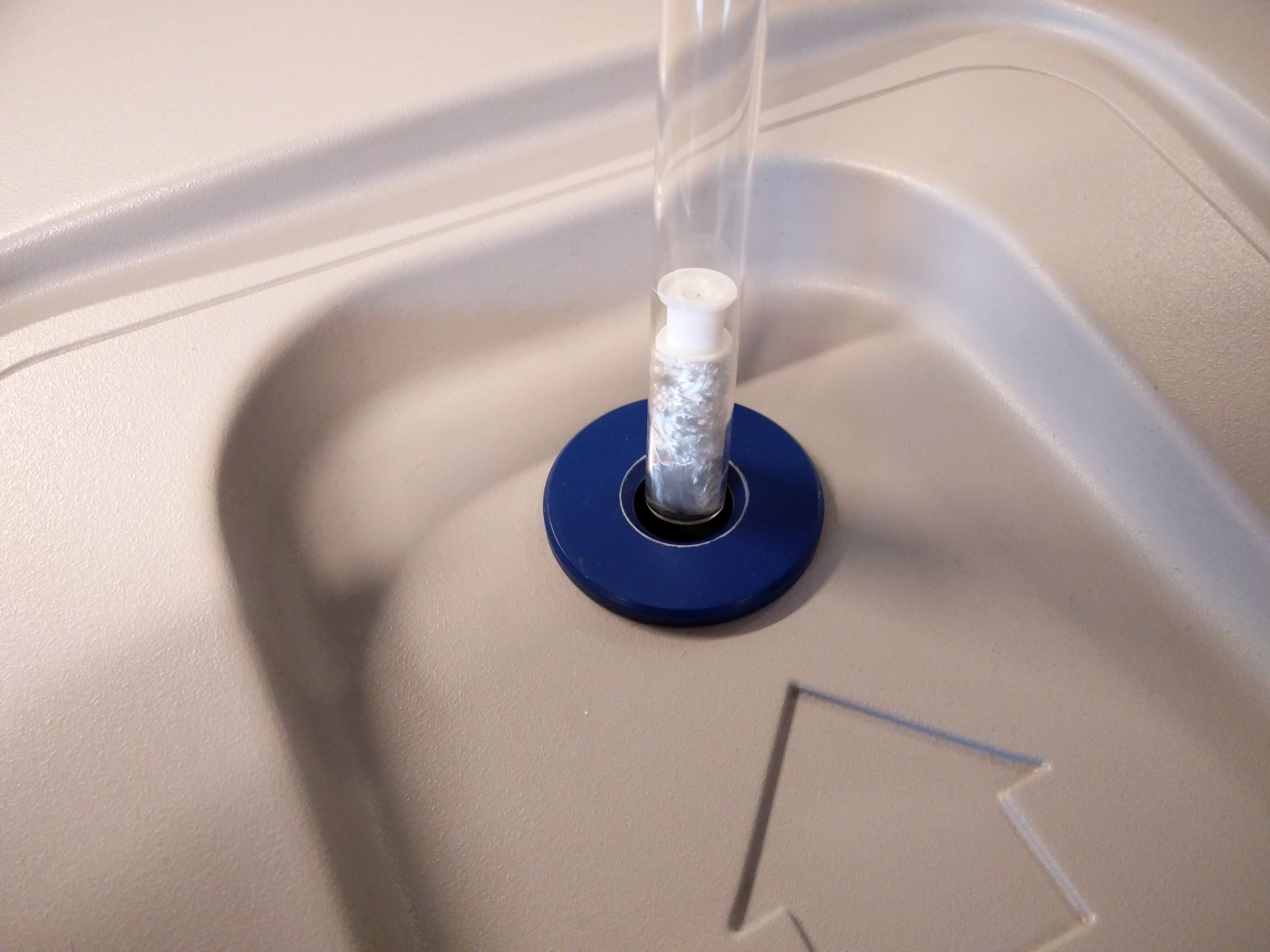
NMR Explained NMR is a researchtechnique that exploits the magnetic properties of certain atomic nuclei. This type of spectroscopy determines the physical and chemical properties of atoms or the molecules in which they are contained. The MQA7020 pulsed NMR analyser is a versatile instrument useful in a variety of industrial settings. Typical measurements are: finish on fibre, […]
Flory tests

Flory tests explained Abrasion resistance as a result of yarn-yarn interaction can be measured at Senbis. Both dry and wet yarns can be used in combination with our equipment under different loads and angles. Principle For a measurement, a piece of yarn is applied on the apparatus as seen in the figure below. A tension […]
Time to failure
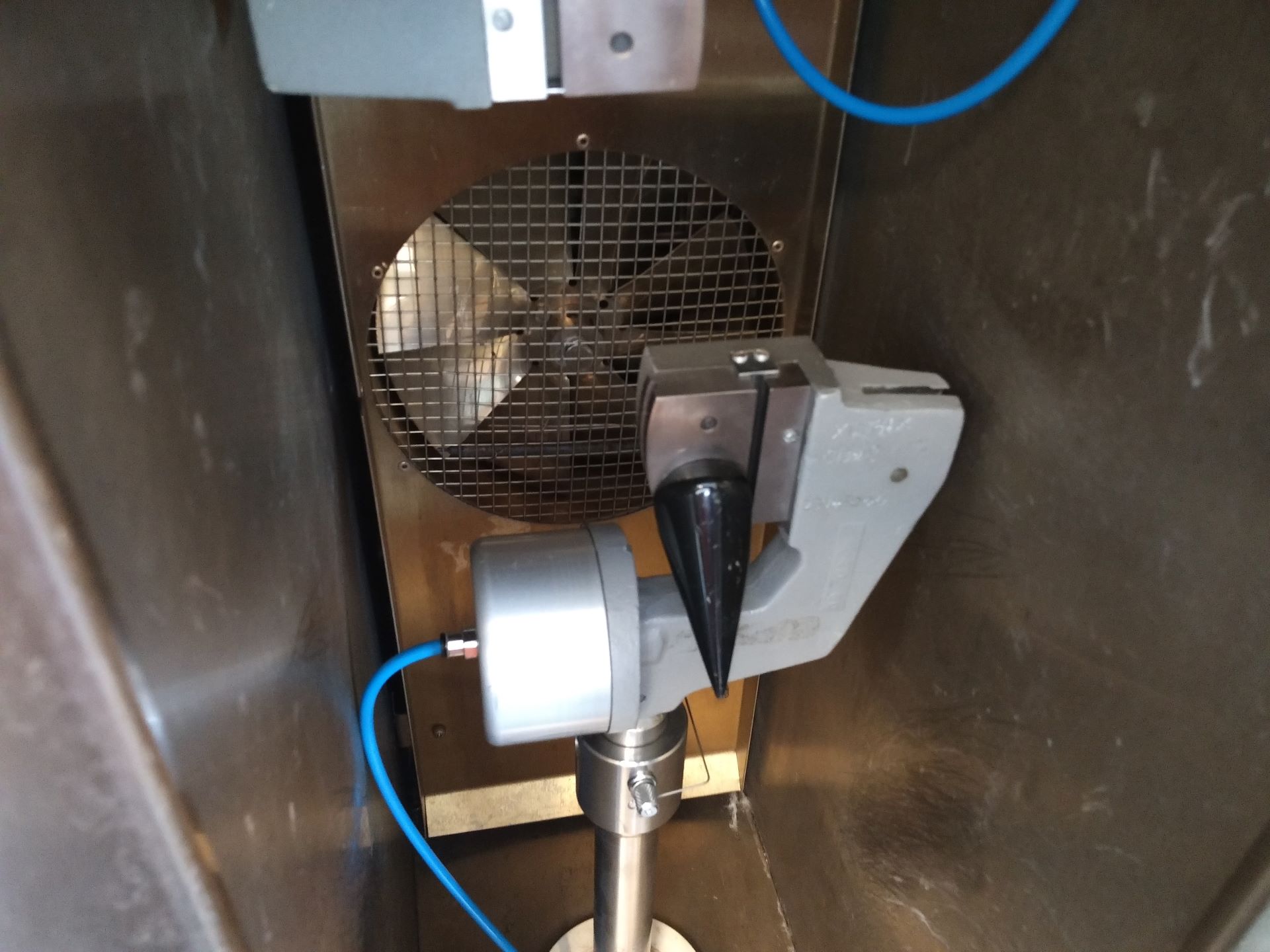
Time to failure explained An absolute strength (force at break) value does not always cover all the information about the strength of a yarn. When a yarn is used in applications where it is subjected to a constant load for a prolonged period of time, the maximum load is often lower than the force at […]
Liquid immersion density
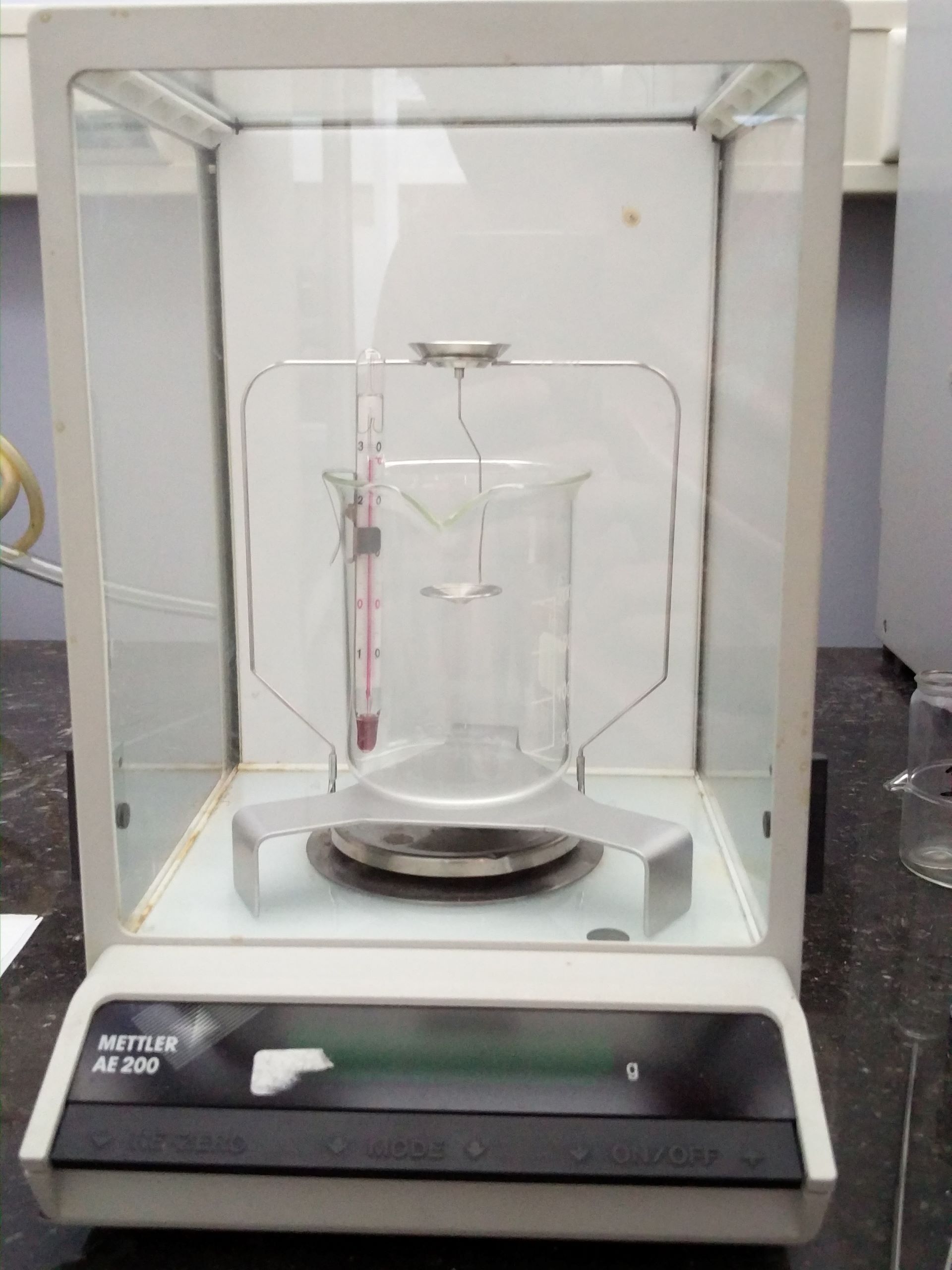
Liquid immersion density explained The density of objects is not always easy to determine by simply measuring the weight and dimensions and devide them by each other. Some objects or materials need to be submersed in a liquid to measure the volume displacement. Our equipement is able to determine the density of samples weighing more […]
Rothschild entanglement tester
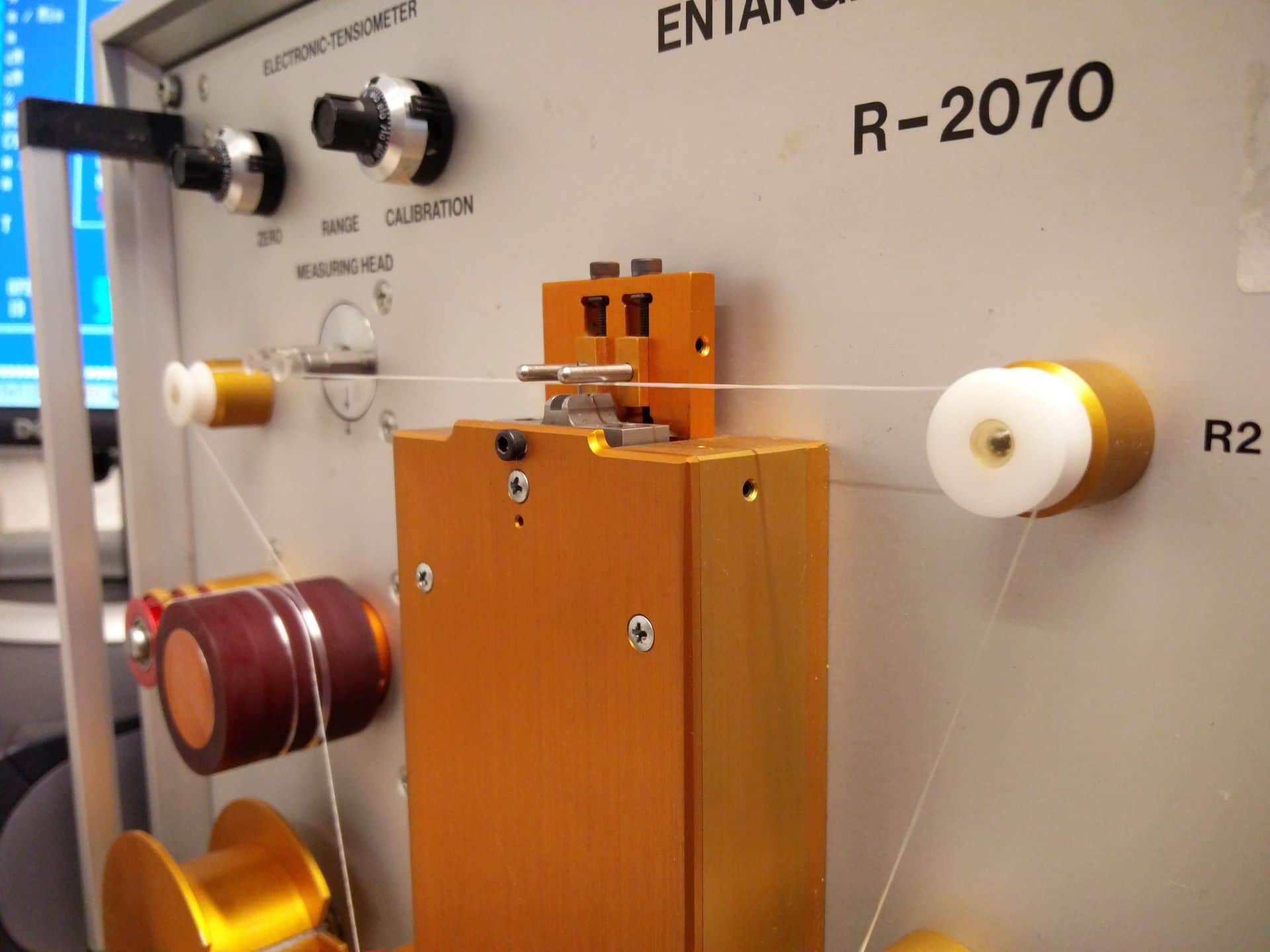
Rothschild polymer entanglement tester explained Entanglements are used to provide cohesion between filaments in a synthetic yarn. This is a low cost alternative for twisting. When no filament cohesion is present a multifilament yarn would split easily when it is bend or maneuvered. Splitting of yarns is very unpractical during processes like weaving. The amount […]
Davenport density gradient column
Davenport density gradient column explained With our density gradient columns it is possible to measure the density of a polymeric sample. The principle of a Davenport density column is simple and accurate: two different organic “solvents” with different densities are mixed in such a way that a density profile over the height of the column is […]
Pulse propagation method (PPM) for sonic modulus

Pulse propagation method for sonic modulus explained The sonic modulus of a multifilament yarn can be measured with our pulse propagation setup (PPM). The pulse propagation speed in a medium in a multifilament yarn depends on the crystallinity and the orientation of the amorphous phase. The higher the crystallinity or the more orientation in the […]
XRD (X-Ray Diffraction Analysis)

XRD Analysis explained X-Ray Diffraction Analysis (XRD) investigates crystalline material structure, including atomic arrangement, crystallite size, and imperfections.
Birefringence measurement of yarns (Sénarmont method)

Birefringence measurement of yarns explained The overall orientation in yarns as induced by the spin-draw process can be quantified by measuring the birefringence (Dn). For the determination of the birefringence, 20 single filaments from a multifilament yarn are prepared in such a way that the cross-sections are cut under an angle of approximately 45°. A […]